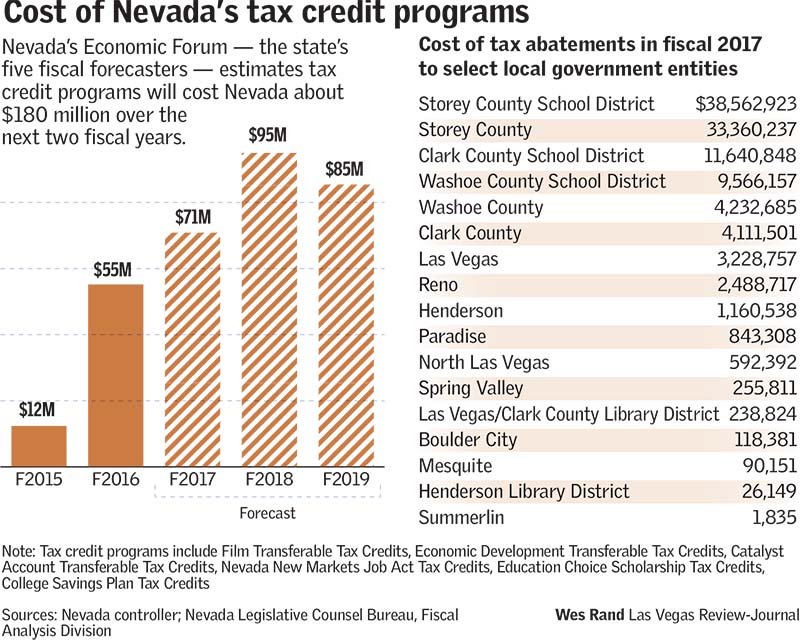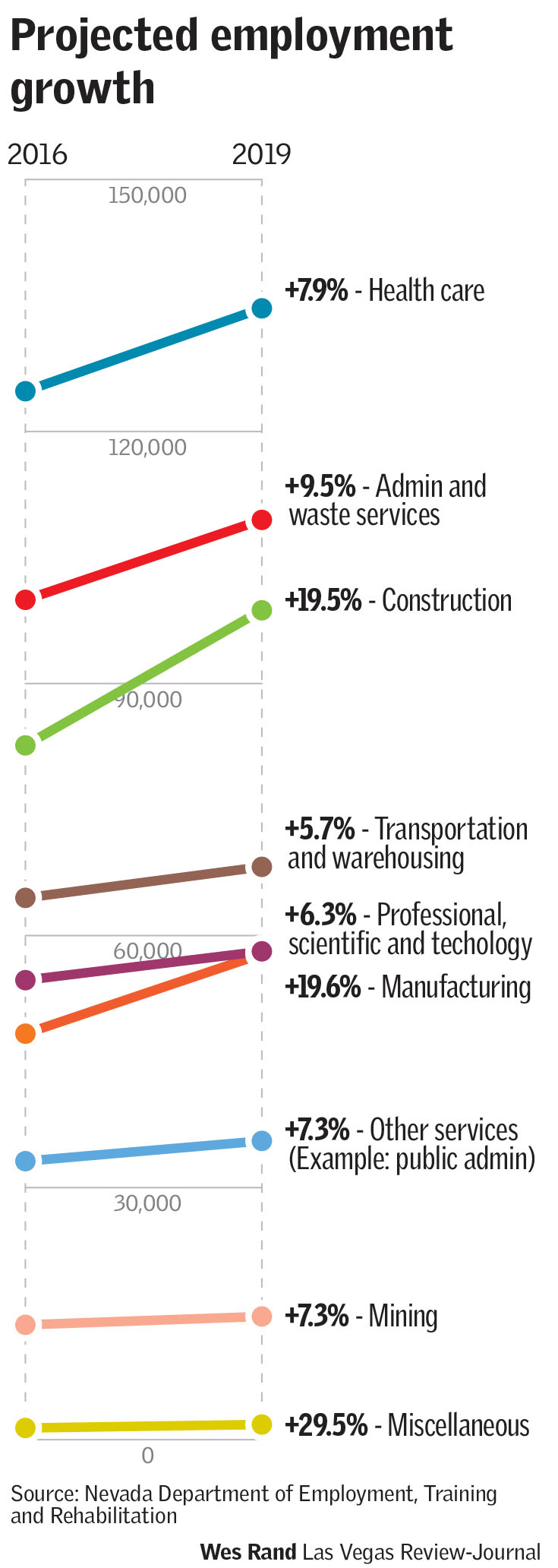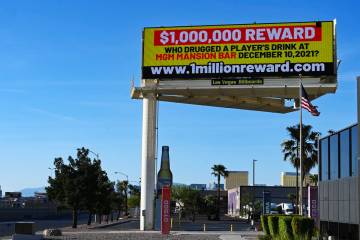Price tag for Nevada’s tax incentives finally revealed
Eighty years ago, the Balance Agriculture with Industry Program was born in Mississippi — it was the first time advertising and incentives were deployed in hopes of enticing industries to relocate.
And since then, “we’ve had this cost-benefit debate in America” about tax incentives, “but we haven’t really known the costs,” said Greg LeRoy, president of the policy group Good Jobs First, a watchdog group promoting accountability in economic incentives offered to companies.
That is, we haven’t known the costs until now.
For the first time ever — because of a new national mandate — the Nevada controller’s office broke down how much tax abatements have reduced the tax revenues of local governments.
The controller’s office released calculations Sept. 27 that outlined how much entities would have had in additional tax revenue if no tax abatements were given to the companies that received them in fiscal year 2017 and had the companies still set up operations in Nevada without them.
The report shows that in fiscal year 2017, tax abatements reduced the tax revenue to Clark County by $4 million and to the Clark County School District by $11.6 million.
No Clark County School District trustees could be reached for comment Wednesday or Thursday.
But Clark County Commissioner Steve Sisolak, who is running for governor, said Thursday that he would need more information to determine whether the benefits of tax abatements are worth the $4 million in lost tax revenue to the county.
“That is a decision that the Legislature and the governor made as it relates to attracting businesses,” Sisolak said.
Clark County Commissioner Chris Giunchigliani, who is also running for governor, said Thursday that she hopes to work “with businesses and legislators to fix these systemic problems.”
“Yerington (which the controller’s report shows lost $12,179 in tax revenue because of economic development tax abatements in fiscal year 2017) needs a new senior center, and I’m told it’s around $30,000. It may seem a small amount, but it’s key to their community. These abatements need to be vetted and make common sense,” she said.

‘Crony handouts’
Robert Fellner, transparency director at the Nevada Policy Research Institute, said Thursday that the report “confirms just how badly ordinary taxpayers are punished by crony handouts to special interests like Tesla.”
Fellner added that “when governments like CCSD complain of budget shortfalls, it is regular taxpayers who will be forced to make up the difference, not crony capitalists like Tesla.”
When Nevada approved roughly $1.25 billion in tax abatements for Tesla in 2014, it was 14 times larger than any deal Nevada had done before, LeRoy said Wednesday.
“This data is important because it shows how tax revenues flow between different parts of the government.
If you take a bunch of money out of one part of the government, other parts have to make it up if we’re going to treat kids equally and treat other public services equally. That means this is really a state issue as well as a local issue. And now we can really see the connections,” LeRoy said.

Cost-benefits
A total of 111 companies received tax abatements — or reductions in the amount of taxes that a company will pay over time — in Nevada over the past two fiscal years. Nevada’s Economic Forum — the state’s five fiscal forecasters — estimates tax credit programs are slated to cost Nevada about $180.5 million over the next two fiscal years.
Steve Hill, director of the Governor’s Office of Economic Development, said these tax abatements have helped to increase economic diversification, boost wages and facilitate job creation.
Without Nevada’s partial abatement of sales tax on manufacturing equipment, “we just wouldn’t be competitive in attracting manufacturing companies,” Hill said Wednesday.
There were 48,321 Nevadans employed in manufacturing in 2016, according to the Nevada Department of Employment, Training and Rehabilitation. By 2019, the department expects that employment figure to grow by 19.6 percent, to 57,802.
“Those companies also bring tax revenue, both in the portion of the taxes that they pay as well as all of the taxes that come because they are here, because they are employing people — their employees then spend those salaries in the community, and that has an indirect effect that generates tax revenue as well,” Hill said. “That number is substantially higher than the amount of the abatements.”
Forgone tax revenue
Hill said the reduced money to local governments because of tax abatements is “not money that is extracted from any budgets,” adding it’s not like abatements are checks that are written to companies.
“This is the controller’s calculation of the difference between the full tax rate and the amount the company paid.”
But LeRoy disagrees.
“Just because it’s uncollected revenue because we gave a company a tax break doesn’t mean it’s not real spending. It’s real spending just as if we wrote the company a check,” LeRoy said. “It’s all economic development spending, and finally we’re going to start treating tax expenditures just as transparently as other kinds of expenditures.”
Contact Nicole Raz at nraz@reviewjournal.com or 702-380-4512. Follow @JournalistNikki on Twitter.
Renewable energy
The report shows that tax abatements given by the Nevada Governor's Office of Energy account for the largest reductions in tax revenues to local governments, followed by tax abatements given by the economic development office.
Angie Dykema, director of the energy office, did not address the cost of the renewable energy tax abatement program to local governments in a statement, but outlined the program's benefits.
"The state's investment of $734 million in tax incentives has attracted nearly $7 billion in capital investments, payroll, and taxes paid, representing a 10-to-1 return on investment. The projects that have received an abatement from the Governor's Office of Energy created more than 4,600 jobs across the state that pay an average wage of more than $37 an hour. The state of Nevada will continue developing and implementing policies like this which help us reach our clean energy goals while also driving economic growth statewide," she said.




























